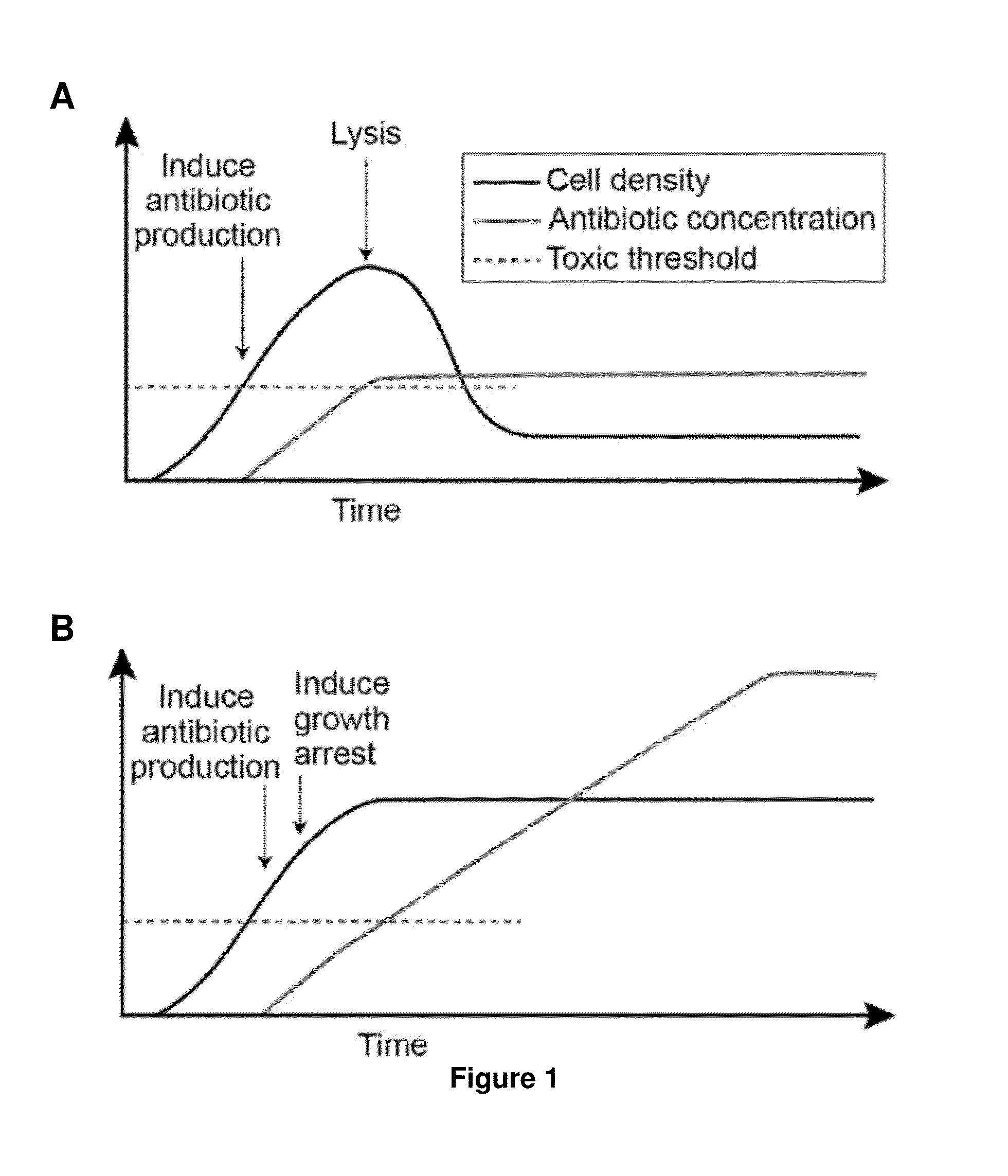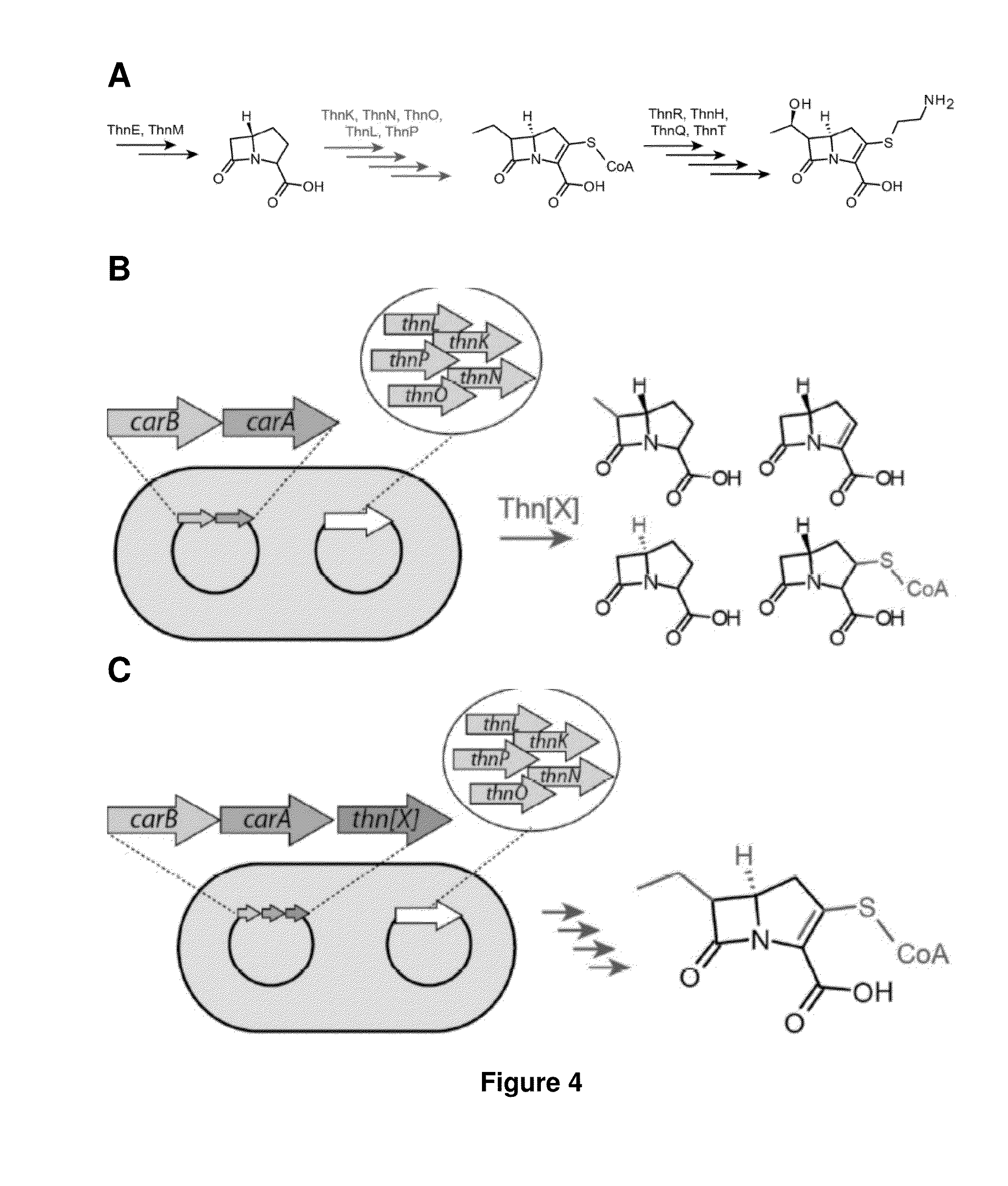Growth Arrested Cells Useful for Producing Compounds
a technology of growth arresting cells and compounds, applied in the direction of biochemistry apparatus and processes, transferases, microorganisms, etc., can solve the problems of insufficient amount of antibiotics produced by many species, and the solution is not readily available for antibiotic manufacture, so as to increase the expression of the promoter, the effect of increasing expression
- Summary
- Abstract
- Description
- Claims
- Application Information
AI Technical Summary
Benefits of technology
Problems solved by technology
Method used
Image
Examples
example 1
HipA-Triggered Growth Arrest and β-Lactam Tolerance in Escherichia coli are Mediated by RelA-Dependent ppGpp Synthesis
[0133]Persistence is a phenomenon whereby a subpopulation of bacterial cells enters a transient growth-arrested state that confers antibiotic tolerance. While entrance into persistence has been linked to the activities of toxin proteins, the molecular mechanisms by which toxins induce growth arrest and the persistent state remain unclear. Here, we show that overexpression of the protein kinase HipA in Escherichia coli triggers growth arrest by activating synthesis of the alarmone guanosine tetraphosphate (ppGpp) by the enzyme RelA, a signal typically associated with amino acid starvation. We further demonstrate that chemically suppressing ppGpp synthesis with chloramphenicol relieves inhibition of DNA replication initiation and RNA synthesis in HipA-arrested cells and restores vulnerability to β-lactam antibiotics. HipA-arrested cells maintain glucose uptake and oxyg...
example 2
[0175]Production of Car in E. coli by expression of the Car pathway from Pectobacterium carotovora has been previously demonstrated {McGowan, 1996 #1928}, however, to our knowledge, production of Car to the point of inducing lysis of the producing cells has not been seen. We transformed a plasmid encoding the Car biosynthesis pathway (codon-optimized carA, carB, and carC genes), into E. coli BL21 cells bearing a plasmid encoding the HipA toxin. The Car pathway was induced using IPTG, after which HipA expression was induced using anhydrous tetracycline, and cells were incubated for 24 hours. In cells expressing Car, we observed lysis, whereas cells expressing HipA and Car did not lyse. Furthermore, a compound with the exact mass as the hydrolyzed Car (an unstable compound) was detected using mass spectrometry (MS). Cells expressing a partial pathway did not show any lysis whatsoever, nor was any sign of Car detected.
[0176]In some embodiments, the invention provides for the utility of...
PUM
| Property | Measurement | Unit |
|---|---|---|
| Tm | aaaaa | aaaaa |
| temperature | aaaaa | aaaaa |
| concentrations | aaaaa | aaaaa |
Abstract
Description
Claims
Application Information
 Login to View More
Login to View More - R&D
- Intellectual Property
- Life Sciences
- Materials
- Tech Scout
- Unparalleled Data Quality
- Higher Quality Content
- 60% Fewer Hallucinations
Browse by: Latest US Patents, China's latest patents, Technical Efficacy Thesaurus, Application Domain, Technology Topic, Popular Technical Reports.
© 2025 PatSnap. All rights reserved.Legal|Privacy policy|Modern Slavery Act Transparency Statement|Sitemap|About US| Contact US: help@patsnap.com



